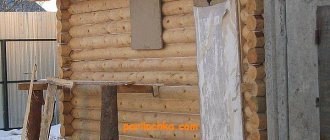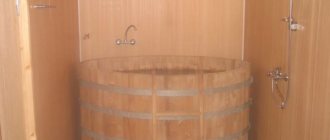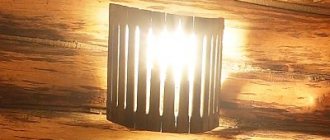The comfort of visiting a steam room depends on many components, including the availability of water in the room. To organize water supply in a bathhouse, it is not necessary to call a specialist. If desired, you can actually equip it with your own hands. The main thing is to understand the nuances and choose the right equipment.
In principle, you can fill the containers in the bathhouse with water before each visit. But this is not very convenient. Upon completion of the bath procedures, the barrels must be emptied, since in winter frozen excess water can damage them, and in summer harmful microorganisms accumulate in stagnant water. Don’t forget that constantly pouring water onto the floor has a negative impact on the quality of the foundation and wood structures.
Types of water supply in the bath
Water supply in the bathhouse can be organized in two versions: summer and all-season. The first is the simplest, but not very convenient. The summer supply of water to the bathhouse is arranged by laying a water pipeline directly on the surface of the ground. In this case, it is not necessary to use expensive pipes - ordinary soft hoses will do. But with the onset of cold weather, they will have to be removed, and water will again be carried into the bathhouse in buckets.
The winter option allows you to supply water through a pipeline all year round, without monitoring the air temperature outside the window. There is no need to worry about the safety of pipes in winter and waste time assembling/disassembling them. The disadvantages of such a system include significant costs and the need for land activities.
Calculations before purchasing
When choosing a pump, you must first take into account its purpose and operating conditions. A simple calculation will help you determine the basic parameters, which is recommended to be performed before selecting a particular model. This will ensure normal operation of the system and increase the service life of the device.
The circulation pump for the heating circuit is calculated using the formula:
Q=0.86R/TF-TR, where:
- Q—pump capacity (calculated);
- R is the thermal power required to heat a given room (at the rate of 1 kW per 10 m2);
- TF - coolant temperature at the inlet to the radiator system;
- TR is the temperature of the coolant at the outlet of the radiator system.
For example, to heat a house with an area of 100 m2, a thermal power of 10 kW will be required. If the temperature difference is 20° (at the starting point 75° and at the final point 55°), then we get the following result: 0.43 m3/hour.
The example given is slightly simplified for clarity . As a rule, knowing the performance of the pump, it is quite possible to choose a specific model without wasting time on calculating other parameters.
The calculation of the DHW pump can be omitted, guided by simple considerations. In a hot water supply system, the water is already under a certain pressure, otherwise it will not flow out of the tap.
If its circulation is organized, it is enough to slightly increase the pressure to force the flow to move. Any low-power pump designed to work with water at temperatures up to 65° is suitable for this.
Pipes for water supply
When organizing water supply in a bathhouse, it is necessary to choose the right pipes:
- Steel ones are considered the most unsuitable option. They quickly become rusty and require complex installation;
- Copper ones have a lot of advantages, but are quite expensive;
- Metal-plastic ones consist of aluminum coated on both sides with polyethylene. They are characterized by high strength and ductility. They are the best option for internal hot water supply;
- Polypropylene are recommended for organizing cold water supply. To connect them, not fittings are used, but welding.
Installation diagrams
There are two ways to connect pumps:
- Consistent in the break of the return line of the contour.
- Parallel with the collector.
The first method is good for systems with a small number of consumption devices and with a short total length of pipeline lines. The pump is connected at the end of the circulation circle, into the return line gap.
The second method is used for a large number of circuits (for example, heated floor loops) . It requires a powerful, productive pump, otherwise you will have to install your own device for each circuit, which increases noise and load on the electrical network.
Pumps
To supply water to baths, different types of pumps are used. The specific option is chosen depending on:
- Pipeline length;
- Water depths;
- Feed heights;
- Feed automation.
Float pumps
Recommended exclusively for summer water supply. Mounted on the surface of open water sources: rivers, wells, ponds. The disadvantages include low power, the ability to operate only at positive temperatures, the absence of a circuit breaker, and the need to install a separate container for water.
Among the obvious advantages are the ability to move (swim) along the surface of the water intake and independence from the height of the water in the source.
Submersible pumps
The devices are immersed to a shallow depth under water and secured with polyamide ropes or stainless steel cables. They work at sub-zero temperatures, but cannot function when the water level drops significantly and the suction pipe is exposed. Not very powerful, they require separate water tanks, and are not equipped with built-in controls.
Unlike other types of pumps, submersible and float pumps are capable of operating through flexible hoses. In addition, they can be equipped with automatic control.
Pumps with hydraulic accumulators
New, modern devices of a universal nature. Among the positive characteristics are the presence of built-in automation, the ability to connect any equipment, and stable water supply indicators. Designed for both open sources and shallow wells. No need to install additional containers. They easily suck water from the depth and deliver it to the required height. The latter characteristics may vary on different devices, so you should pay special attention to them when purchasing a pump.
The disadvantages include high cost, installation only in warm rooms, the need to install water shut-off valves, and noise that causes a feeling of discomfort.
Deep well pumps
The most reliable, powerful, but also expensive pumps. Equipped with their own multi-stage protection against short circuits and silting. It is not profitable to install them only for a bath. In most cases, deep-well pumps are recommended for organizing water supply to all buildings on the site. They require a separate storage tank for water.
Criterias of choice
The choice of one model or another is determined by several criteria:
- Purpose of the device, type of system where it will work.
- Specifications.
- Construction type.
- Manufacturer.
- Price.
The last two points are no less important, since they determine the quality, durability of the pump, and the cost of its purchase.
When choosing a device, you should not hesitate to consult with the seller. If you decide to buy an expensive pump from a well-known company, you need to ask the seller to show the certificate of conformity for the device.
If it's not a fake, there won't be any problems. Otherwise, you should refuse the purchase and look in another store.
How to make the first launch?
The first start-up, as a rule, is made after the device is fully connected, the entire line is assembled and filled with water.
It is prohibited by the instructions to turn on the pump dry. This is fraught with breakdown and failure, as well as refusal of the warranty workshop to carry out repairs.
Before starting, you need to make sure that the system is completely ready for operation . Most designs automatically remove air when a special screw is turned.
You need to unscrew it half a turn (or more) and wait a few seconds until the air comes out and water flows out. For other pumps it is necessary to install a special air venting element (Maevsky valve).
A well is a time-tested source of water
A well is a traditional source of water that was valued in ancient times and remains relevant today. The water supply to the bathhouse can be supplied from an existing well, or a new source can be dug and equipped on a plot of land. This method is not expensive, it is implemented quite simply and at the same time is distinguished by its effectiveness.
Negative points in operating a well:
- the water will not always be clean, which will be especially noticeable during floods and heavy rainfall;
- In the operation of such a water supply system, interruptions may occur due to variability in the water level.
The walls of such wells are created from concrete rings connected to each other using a tongue-and-groove fastening. The bottom of the well is covered with crushed stone, and geotextiles are laid on top of it, which together will become a high-quality filtration structure.
If there is no well, you can make it yourself using a technology called the Abyssinian well. Essentially, this is a pipe driven into the ground down to the layer of soil where groundwater accumulates. However, such a system can only be used if the aquifer is located at a depth of no more than 12 meters.
Required tools and materials
Before assembly, the pipe had to be cut into its component parts according to the diagram (more about it below), chamfered from the ends, installed fittings and tightened the union nuts. How did I do all this?
Scissors for cutting pipes - 450 rub.
Scissors.
Rimmer - a device for chamfering the ends of pipes before assembly - 130 RUR.
Rimmer.
Wrench for tightening chamfer union nuts - 240 RUR.
I didn’t spend money on a key - with small diameters you can do without it. However, a hacksaw and a sharp knife can handle cutting pipes and chamfering, but a special tool provides accuracy, convenience and comfort when working.
Pipe for HDPE water supply 20 mm 25 m - 500 rub.
The pipe is rolled into a coil, very convenient for carrying, and it fits freely into the trunk of a car. The length was determined based on the distance from the house to the bathhouse - about 20 m, the remainder will be used for entering the premises.
Compression fittings (90° elbow) 4 pcs. — 220 rub.
Needed for connecting the main parts of the water supply system and installing ball valves.
Heating cable SRL16 30 m - 4830 rub.
I found the brand, type and power of the cable on the Internet. Heating of the water supply is needed. The freezing depth for my geographical location is more than a meter. Digging such a trench in a cramped area is extremely difficult. I will deepen it to 40-50 cm.
Depth of soil freezing by region.
Thermal insulation for thermoflex pipes C22 25 m - 1400 rub.
Well, and various auxiliary things:
- UNIPAK sealant - 250 rubles;
- sanitary linen - 50 rubles;
- polyurethane foam (one 0.5 l cylinder) - 150 rubles;
- two ball valves D 20 - 320 RUR;
- electrical and other small items - 500 rub.
Sealant and flax will make threaded connections of fittings with pipes and taps more reliable.
Electrical cable KG 3*1.5 3 m, distribution box, electrical socket with plug, electrical tape, zip ties, screws, nails - this was found in my supplies.











